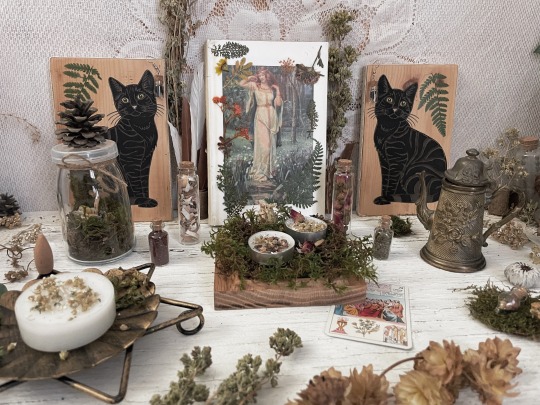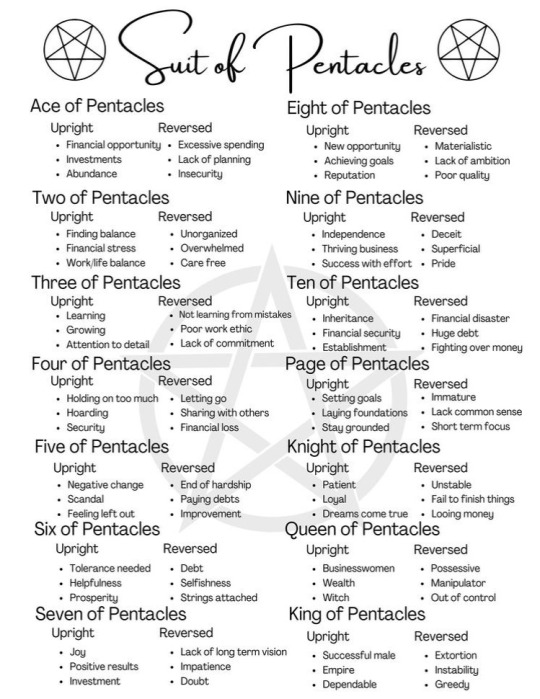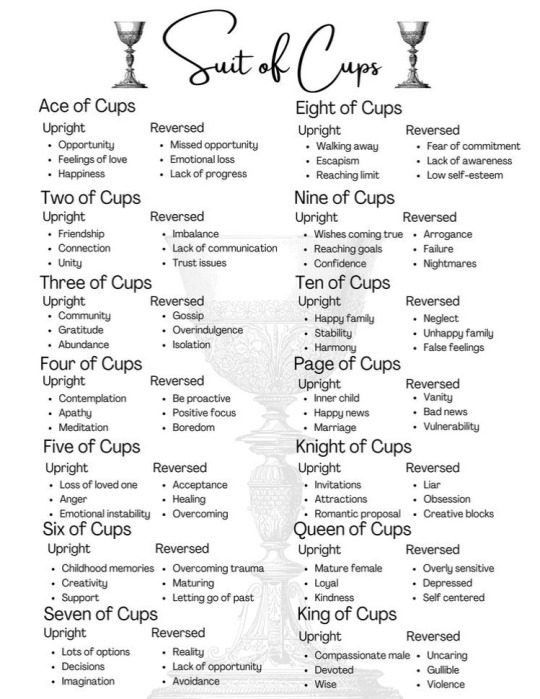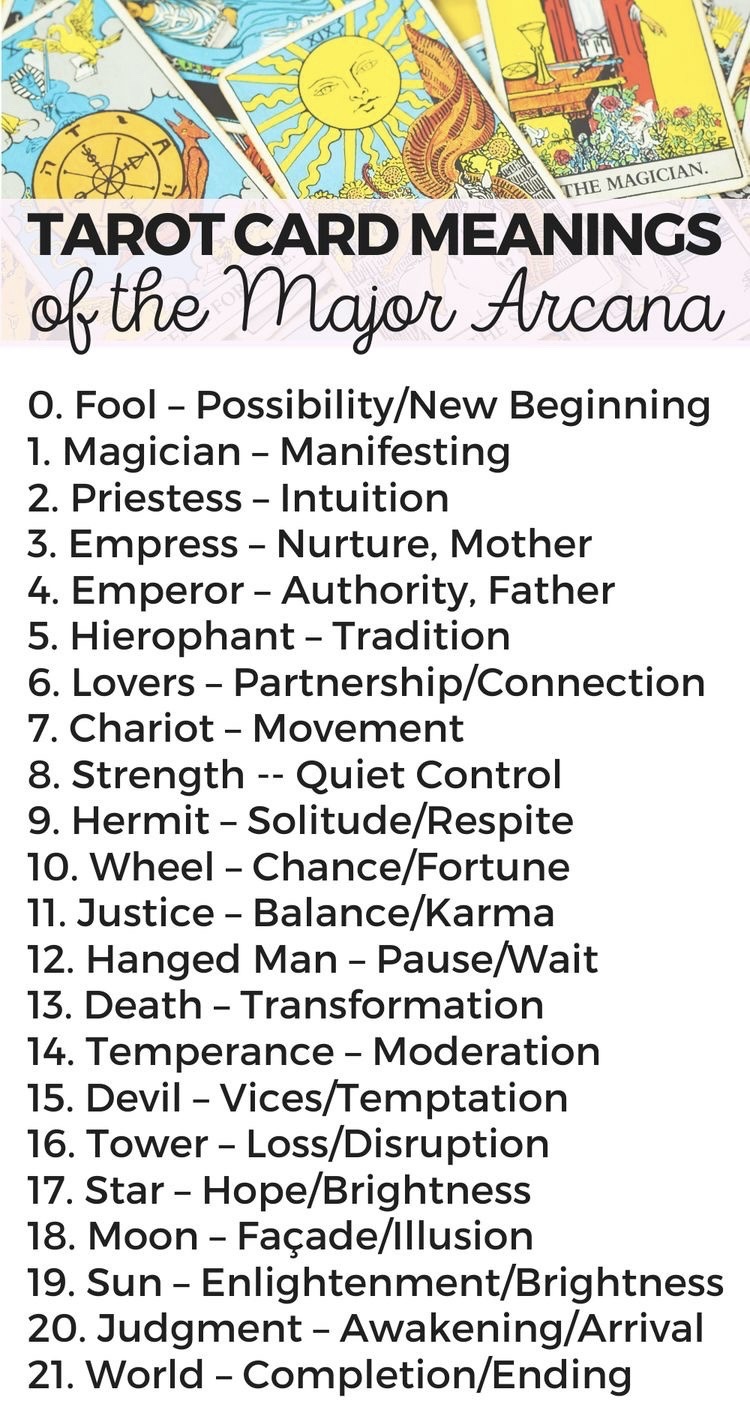Text
Types of Protective Magick:
Apotropaic: Usually in the form of amulets, written charms; used to turn away an undesired force. Examples include the Gorgoneion, a holy scripture (such as the Bible, Quran, Havamal, the Bhagavad Gita or the Devi Gita), Iron or Iron-Based Items.
Decoy: Instead of the Malefic Force hitting the practitioner, it gets distracted with an item or representation. Like a poppet, piece of meat.
Spirit Trap: The Malefic Force is given a distraction that prevents it from hurting the practitioner. Can include a layered plant like onion. Some make use of grains of sand, salt or rice which supposedly forces the spirit to count it rather than enter the house.
Offering: An item that is desirable is placed outside the house, the spirit partakes of that rather than entering the home. Especially suited for the Deipnon.
Warding (Spatial): Items are placed around the space that set up a protective barrier. Can become an issue when filtering, make sure to set the intent that malefic is kept out and benefic is allowed in.
Guardians: Statues can be infused to keep watch, allowing good in and evil is warded off. Some animals are very lucky and can be used for magnetizing and pacifying (reducing negative qualities and instilling positive ones in the home)
Floor Washing: Particular herbs or items are noted for their protective qualities. Might not mix Fire Herbs with Water, but it also depends on the space. Martial Herbs might be preferred outside but not in the living space where relaxation and peace is sought. Most basic is basil or salt.
Door Guarding: An item is placed over the door to ward off evil forces, horseshoes, iron, signs with sacred scripture, chalking and so on. A plant can be kept by the front door.
Binding: More active form of pacifying, enemy or force is stopped and blocked by methods. Prevents movement and action being taken against the practitioner. Useful for spirits, a spirit may be bound to a tree or item to prevent it from doing harm until it is decided or mediated. Can be used to help with illnesses and fevers.
Bodily Warding: Amulets worn on the body, strengthens spiritual connection in some cases while preventing unwanted forces from interacting. Veiling is common. St. Cards, Spiritual Scriptures and others can be kept or recited over the self. Useful before rituals.
----
If you like what you see and want to support, commission a reading or healing, or just vibe, please feel free to check out my Ko-Fi here
1K notes
·
View notes
Text

Introduction to Shielding
If you haven’t already, check out my lessons on visualisation for the basic knowledge you’ll need to begin practicing shielding.
So what is shielding?
Shielding is a manipulation of energy, used to create a barrier between yourself and unwanted, usually negative or malicious energies. It’s a basic aspect of spellwork that everyone, beginner or experienced, should use to keep themselves safe.
What can I use shielding for?
Some beginner-level uses for shielding are drawing a circle, or casting a spell. A more experienced individual might use shielding in astral travel or spirit work, where there are a lot more malicious energies involved. Personally, I use shielding as often as possible, for instance when I do tarot readings, spells, spirit work, shadow work, and especially cursing. It gives that extra guarantee that you won't flood your personal space with unwanted energies.
Other uses include shielding against real-life dangers, to a certain degree. I often shield when I am walking through town at night for extra protection. But please remember to take other measures too! Call someone, pretend to be on the phone, plan your route, and even carry pepper spray if it's legal where you are.
An easy shielding method:
The easiest way to explain this is to think of your energy as a physical manifestation. Think how power attacks are shown in anime or cartoons - a streak of colour or light, or an element. Make it personable to you: fire signs (Leo/Aries/Sagittarius) might visualise fire, or a red energy or light etc.
Firstly, some people prefer to cleanse before shielding. I don't think its all that necessary but the choice is yours.
Begin by easing yourself into meditation. Get comfortable, and use whichever technique works for you. I have various methods for this in my visualisation lessons if you are struggling.
Attempt to visualise the energies surrounding you in your mind. It might be a swirling colour of light, almost like a cloud of dust. It could be flames, it could be water. Maybe try to see it held within your hand.
Now, attempt to shape this energy around your entire body. You might want to start with a bubble or a cube surrounding you. Feel this shape surrounding and protecting you. Visualise negative and unwanted energies being held back by it.
You can also layer shields, so if you are working with a particularly malicious energy you might want to have multiple shapes surrounding you, all within each other. You can also work with deities or spirits to ask them to shield you too.
Shielding Incantation
When I am shielding, I recite a spell as well as using visualisation techniques.
The shield of protection, I carry it strong, No ill wishes or trouble shall come along, You cannot harm me, or weaken my soul, My light is my weapon, and peace is my goal.
Try it out for yourself and let me know in the comments how it went! Thank you as always for reading. Please message for requests.
1K notes
·
View notes
Photo









mythology: Artemis and Apollo
“Leto bore Apollon and Artemis, delighting in arrows, Both of lovely shape like none of the heavenly gods.” - Hesiod, Theogony
2K notes
·
View notes
Text
Top Recommendations for Norse Pagans that aren’t Problematic.
There is a lot of books by people who are racist and part of far right side of Heathenry and I’m going to try my best and list the books I have that helped me on my path that isn’t problematic and have questionable intentions. Books and YouTube channels.
Anglo Saxon Socerery and Magic by Alaric Albertson. He is very knowledgeable in his work and path especially on runes which includes the rune poem to make your own interpretation and witchcraft side of things. He even talks about the Elves which I appreciate because not a lot of Norse authors talk about them. It’s more Germanic than Norse but I can’t see any problem adopting certain aspects since they are very similar. I will say he does take himself a bit serious at times but his information is so good and worthwhile. I have not read his first book on Travels through middle earth but it focus on more the pagan side.
Poetic Edda and Prose Edda: it’s what every Norse pagan needs. It’s the foundation of Norse paganism not bibles but myths and tales that can help along our journey. There is tons of translations, but my favorites are Dr. Jackson Crawford Poetic Edda and Anthony Fawkes Prose Edda. But look into other sagas as well like Volsung which Dr Jackson Crawford also wrote about.
Beowulf. More of a Germanic tale but again includes it has roots of Germanic sorcery, traditions, religion like the concept of Wyrd (Fate), the runes, and values within his society like loyalty and mythical creatures. Again there is many translations even Jrr Tolkien did a incompleted version of Beowulf but I think Tom Shippey finished that version I could be wrong. Nonetheless explore more than one, the oneI have is by Seamus Heaney.
Grimm Fairy Tales this mostly German Folklore but it’s still quite important to learn about in German folk magic, creatures and entities in German folklore tends to be very real to the practitioner in their spellwork.
The Way of Fire and Ice by Ryan Smith a very progressive outlook in Norse paganism, he talks about creating communities in Norse paganism and calling out and denouncing Nazis in the community how Norse Paganism is inclusive and how to be open to all types of people. But he has a beginner approach to the deities, beliefs, values within Norse paganism.
Look into a lot of academic sources that’s where you will find a lot of information on Norse paganism and religions.
Tacitus Germania - A Roman historian talking about the Germanic tribes their culture and customs.
Saxo Grammaticus history of the Danes
The Viking Way by Neil Price it goes good in depths about magic in Scandinavia like Seidh
Dictionary of Norse Mythology a quick guide to northern myths, if you are trying to find a specific god and you don’t have time to look up in a book it’s in there with great information to each one.
Children of Ask and Elm: History of Vikings by Neil Price on Scandinavian culture during the Viking age
Some YouTube Channels
The Norse Witch: Bente lives in Germany and their channel encompasses all of Norse paganism more around magic. They do interviews with other Norse witches of folk magic like Icelandic and Danish. Even gives good book recommendations and advice on general spellwork as well!
Freyja Norling: Freyja actually lives in Norway and is a Volva, she focus on so many things within Norse paganism like Trolls, the runes, the gods, knot magic, etc. I love her channel because she actually lives in Norway and very experienced in her work.
Dr Jackson Crawford he is an author but he also has a YouTube channel. He is a professor in Georgia on Norse culture, mythology, and language. He did a series of videos on the runes which are more historically accurate. Discusses the myths and the language and what do they mean. Jackson Crawford isn’t a Norse pagan nor he doesn’t care if you are one but just letting you know he isn’t coming from a pagan perspective.
The Welsh Viking also like Jackson Crawford but still has really great knowledge on Viking culture
Arith Häger he is a channel that comes from a pagan and historical perspective especially on magical side of Norse paganism like Grandir and Seidh.
Please feel free to add on any recommendations that are helpful and useful to the Norse pagan Community!
717 notes
·
View notes
Text
Brigid Deity Guide
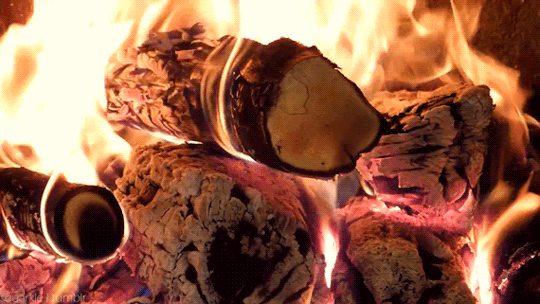
Who is Brigid?
Translated as “The Exalted One” in Old Irish, Brigid is a Gaelic-Celtic Goddess of many things including fire, poetry, fertility, spring, and craftsmanship. Other spellings of her name are Brig, Brighid, or Brigit.
Not unlike many of the Tuatha Dé Danan, Brigid is thought to be a Triple Goddess, similar to The Morrigan. Some believe this means she is three sister goddesses or that she is one goddess made of three different aspects. These sisters, or aspects depending on your belief, would be Brigid the Healer, Brigid the Smith, and Brigid the Poet.
By far Brigid was one of the most popular goddesses of the Celts, as she had variations across the Celtic world where her name was Brigantes or Briganti.
The Welsh know her as Ffraid, in Scotland her name is Brìghde/Brìde.
Parents and Siblings
Dagda (Father)
Aengus (Brother)
Midir (Brother)
Aed (Brother)
Cermait (Brother)
Bodb Derg (Brother)
Lovers or Partners
Bres
Children
Ruadán
Epithets
The Exalted One
The High One
Brigid of the Hearth
Notes
Though the Dagda has been established as Brigid’s father, it’s not certain who her mother is. Some say Danu, others say The Morrigan, though this is less likely. I personally have yet to find anywhere that names a mother with any evidence.
Brigid is considered a Mother Goddess.
Brigid has been conflated with the Catholic St. Brigid, who was the daughter of a converted Druid. It is believed by some that St. Brigid of the Catholic church was inspired by the Goddess. The two share many features and even a holiday.
St. Brigid’s day is February 1st and lands on the same day as the Irish-Pagan holiday Imbolc, leading some folks to believe that the saint is a Christianized version of the ancient goddess. However, no study has found there to be any historical link between them.
Brigid was likened to the Roman Minerva, the Greek Athena, as well as the Proto-Indo-European goddess of the dawn.
Brigid has also been known to go by Dana or Danu, though they are also separate deities.
In mythology, Brigid invented Keening, which is a mix of weeping and singing while mourning the death of her son.
Brigid is heavily linked to Irish Holy wells.
Brigid is also known for prophecy as she was worshipped by seers.
She is associated with fire due to her associations with the hearth and smiths
Ultimately there is very little historical information about Brigit, surprising considering she is so popular now and was popular even in the past.
Modern Deity Work
Disclaimer - Not all of these are traditional or historic correspondences nor do they need to be. However, any correspondence that can be considered traditional will be marked with a (T).
Correspondences
Rocks/Stone/Crystals
Gold
Brass
Iron
Fire Agate
Warm colored stones
Herbs/Plants
Oak (T)
Rowan
Clovers
Heather
Chamomile
Early spring flowers
Blackberries
Animals
Boar (T)
Oxen (T)
Serpents
Offerings
Milk (T)
Honey
Alcohol
Candles
Coins (T)
Acts of Devotion
Light a candle
Hold a bonfire for her (or use your fireplace)
Create or recite a poem for her (T)
Hone your craft, whatever it may be!
References and Further Reading
Brigid, Bright Goddess of the Gael - Mythicalireland
Brigid - Mythopedia
Brigit - Britannica
Brigit - Mythus Wiki
Brigid - Druidry.org
Myth and Legends of the Celtic Race by Thomas Rolleston via Sacred Texts
Song of Brigit - Celtic Wonder Tales by Ella Young via Sacred Texts
The Spirit of the Celtic Gods and Goddesses by Carl McColman and Kathryn Hinds
Devotees and Followers to check out:
@mrs-k-cottage-witchch
@polyteleology
@the-purvashadha
as recommended by the community.
Edited for accuracy.
291 notes
·
View notes
Text
How I perceive different deities' energies
(based on personal experiences)
Apollon ☀️: Light coming up from somewhere deep in the gut. An ache that almost burns. And it might if I stare too long. Swelling gold. A chorus of music too perfect to be written, words that could shatter my tongue if I tried to speak them.
Brigid 🔥: A lump at the back of my throat. Tears in my eyes while I smile. Joy and grief mixed together under my ribcage. Melodies sung through the ages, and through tears. Warmth at my back and a hand on my cheek. Baked bread. Garden herbs. Clear water from a well. An embrace that could last an age.
Nyx 🌌: The low, echoing hum of something eternal. Something too ancient to comprehend and too overwhelming to be perceived. Endless. Ethereal. Peace and chaos. Quiet and thunderous. Coffee. Red wine. Onyx.
The Morrigan 🐦⬛: A chant of words I can't understand, spoken in a language I never knew and never forgot. The cold steel of a blade's edge. Sharp, precise, and unwavering. Her language of secrets and ancient knowledge could swallow you whole if you let it.
Hekate 🗝: Whispers. Shadows against candlelight. A flickering flame that knows how to dance in the wind and never extinguish. The smell of old parchment and herbs. A ripple on the water. As intricate and mesmerizing as a spider's web. Silent and sharp like a viper. A bark and a growl heard from somewhere too far away for me to see.
Aine 🧚🏼♀️: Sunlight breaking over the surface of a river. Citrus. Wildflowers. Fresh grass. Wind sweeping over a meadow. Chimes. Fruit trees finally coming into bloom. The juice from an apple trickling down my neck. Laughter. So much laughter.
Aphrodite ❤️: Flower petals. Something sweet and soft like honey that trickles down the back of my throat and seeps into my belly. It spreads all through me like starlight trapped in my veins. Bells. Bliss. A want that could dissolve me. A yearning that would hurt if it didn't taste so lovely. The pain feels like a lifetime away.
Tiamat 🐉: Clusters of stars. Endless reflections of light on the water's surface. The deep song of a whale that echoes through the pulse of the sea. An eye that gazes down from the cosmos.
Caer Ibormeith 🦢: A lullaby that has been with me for longer than I know. A kiss pressed to my forehead. That place between sleeping and awake, between real and not. Cool air at twilight. Dew on the glass before sunrise. Clean fabric. A veil. Flying over the world as it sleeps.
Artemis 🦌: Freedom. Breath-taking, devastating freedom. A stag drinking fresh water from a spring. A doe and her fawn, sleeping as the songbirds chirp at dawn. A rush. An absolute rush like mountain air in my blood. Fireflies in an open field. Bones bleaching in the sun. The thrill of a wolf pack chasing its prey. The moon over the ocean at night. Teeth. Bird calls. Wildflowers. A great bear that walks in the stars. Hymns only beasts can sing. Jasmine and animal fur and the midnight air.
342 notes
·
View notes
Text

All About Imbolc
Imbolc, also known as Imbolg, celebrated on February 1st, marks the halfway point between the winter solstice and the spring equinox in early Ireland and Scotland, and also signified the beginning of the first signs of spring after all the harsh winter days. Originally a pagan holdiay in pre-Christian times, there is little in writing about the historic traditions and customs, although many historians believe it revolved around the Celtic Goddess Brigid, lambing season, and cleansing due to observed ancient poetry.
Brigid is a Goddess and daughter of the father-God of Ireland, Dagda. She is associated with quite a few things depending on the sources, but universally associated with wisdom and poetry. Other associations of hers are blacksmithing, protection, domesticated animals, childbirth, fire, and healing. She was also known as a protector of the home and the family.
Once Christianity arose, it is believed that the Goddess was syncretized with the Irish Saint Brigid by Christian monks due to the many overlapping associations. This caused Imbolc to quickly turn into St. Brigids Day and the next day into Candlemas with the rising Christian popularity, enmeshing the holiday associations together.
Today, many people have mixed the traditions and melded many associations from both religious and cultural history to celebrate their own unique way. Common ways to celebrate are making a Brigid's Cross, welcoming Brigid into the home, having a feast in her honor, cleaning the home and oneself, visiting a holy well, and in some parts of the world they still hold festivals and processions carrying a representation of Brigid. Many pagans nowadays are using associations of hers and their connection with nature to create their own ways to celebrate, however, and you can absolutely celebrate however you feel called to do so.
Imbolc Associations:
Colors - white, gold or yellow, green, and blue
Food - milk, butter, cheese, seeds and grains, breads, herbs, blackberries, oat porridge, wild onion and garlic, honey
Animals - sheep and lambs, swans, cows, burrowing and hibernating animals
Items - candles, corn dolls, Brigid's cross, fires, snowdrops and white flowers, crocuses and daffodils, flower crowns
Crystals - amethyst, garnet, ruby, quartz, bloodstone
Other - lactation, birth, feasting, farm preparation, cleansing and cleaning, the sun, poetry and creative endevours, smithing, water
Ways To Celebrate Imbolc:
make a Brigid's cross
light candles
have a feast
bake bread
plan your spring garden
leave an offering for Brigid
make a corn doll
craft a flower crown
clean your home
take a cleansing bath
make something out of metal
have a bonfire
look for the first signs of spring
make your own butter or cheese
do divination work and seek wisdom
write a poem
435 notes
·
View notes
Text
The Basic Structure of a Ritual
The following is the basic format for a ritual as used by the Godsring. It is not set in stone and can be adapted at your discretion.
Hallowing
The purpose of a hallowing rite is to set aside a sacred space and time for the ritual, to put all participants in a proper mental, spiritual, and physical state for the ritual, and to announce to all nearby wights that a ritual is about to take place. Here is one example:
May the Gods guide us, may our Oaths keep us, May our Deeds free us, may our Ancestors aid us always, May the Gods banish from this Land and Wood all Ill and Wrong, Hallow this Stead, and shield it from all baneful Wights, Let the Gods’ Blessings be upon our Heads!
Ritual
This is the part of the ritual where any desired invocations and prayers are included, as well as any participatory activity for group or public rituals. This is very open, and can be as simple or as extensive as you like.
Offering
The typical offering consists of four components: Grain, Salt, Bread, and a Libation. Additional offerings specific to certain beings or purposes may be used. Conversely, fewer offerings may be given, such as water only. As each offering is placed in its respective vessel, these words are said:
With this grain, we offer you sustenance. With this salt, we offer you wealth. With this bread, we offer you our labor. With this libation, we offer you pleasure.
Closing
The closing of the ritual is usually spoken while pouring the libation offering into the main vessel. The traditional closing used by the Godsring is as follows:
From the Gods to the Earth to us; From us to the Earth to the Gods. A gift has been given; May it be well received.
209 notes
·
View notes
Text
I feel like I'm the minority here, but I don't think trimming branches off trees and bushes or cutting the grass is actually spiritually significant to them.
Lots of folk like to ask permission of a tree's spirit before taking a limb. Which is good, being polite is always a plus. But I genuinely don't think they care. I feel like they have a relationship to branches and leaves like we do to hair or nails - a part of you that grows but doesn't actually hurt to remove.
I think it comes down to scale as well. Taking a 3in thick limb from an ancient Oak tree is going to be irksome but not detrimental, because it has 15 more. Taking a single leaf from a sapling could kill it.
Idk where I was headed with these thoughts. Concluding sentence.
23 notes
·
View notes
Text
7 Virtues of Hellenism.
Xenia - This is the pillar that signifies hospitality, generosity and reciprocity. It's typically demonstrated in a guest/host dynamic.
Kharis - This is the pillar that signifies appreciation and gratitude. It entails giving to the gods and and expressing gratitude when you receive something from them.
Eusebia - This is the pillar that signifies reverence and veneration towards the gods. It can be translated to 'piety' or 'reverant conduct' meaning that you show respect for them.
Hagneia - This is the pillar that signifies purifying yourself. It entails having moral, perhaps physical too, purity and avoiding miasma where possible.
Arete - This is the pillar that signifies excellence and brilliance. It entails trying to reach your highest potential and this can be in any field.
Sophia - This is the pillar that signifies the pursuit of knowledge and wisdom.
Sophrosyne - This is the pillar that signifies self-control and prudence. It involves being of sound mind and remaining balanced, which can further lead to other positive qualities to have.
I hope these are right and that I didn't misunderstand their meanings! Hopefully this is useful to anyone, I certainly enjoyed making the post!
3K notes
·
View notes
Text
WITCHCRAFT INFO

BEGINNER WITCH RESEARCH LIST:
• The history of Witchcraft.
• Different types of Witches.
• Types of magick.
• Types of spells.
• Types of divination.
• Talismans vs sigils
• Seals.
• Altars.
• Closed/open religions.
• Lucid dreaming and astral projection.
• Spirits.
• Basic Witch supplies.
• Symbols and symbolism.
• Basic Witch supplies.
• The elements.
• Grounding and energy work.
• Herbs and their magick.
• Crystals and their powers.
• Sabbaths.
• Moon phases.
• Energy.
WHAT TO PUT IN A BOOK OF SHADOWS/GRIMOIRE:
• Start a lunar diary.
• Keep a dream diary.
• Write your spells.
• Astrology meanings.
• Write your rituals.
• Record rituals.
• Tarot meanings.
• Magickal correspondences.
• Crystal meanings.
• Your natal chart info.
IDEAS FOR YOUR BOOK OF SHADOWS:
• Herbs.
• Deities.
• Crystals.
• Recipes.
• Faeries.
• Elements.
• Mediation.
• Moon phases.
• Casting a circle.
• Full moon names.
• Wheel of the Year.
• History of Witchcraft.
SPELL TIMES
DAWN: spells of study, business, employment, healing, and travel. Preform rituals of purification and to bless new beginnings.
NOON: spells of strength, courage, protection, success, opportunity, and money issues.
SUNSET: spells for release, letting go of illness, heart break, and failure. Banish misery and pain. Perform rituals for breaking addictions and negative habits.
NIGHT: spells for enhance self development. Psychic dreams, awareness, divination, spirituality, love, peace, healing of old wounds, and releasing stress.
PROTECTIVE SYMBOLS AND ITEMS:
• Pentacle.
• Solar cross.
• Mars symbol.
• Hamsa.
• Eye of Horus.
• Triquetra.
• Pentagram.
• Bindrune.
• Hexagram of Solomon.
• Crossed spear.
• Black obsidian.
• Clove.
• Black pepper.
• Rosemary.
• Dragons blood incense.
• Garlic.
• Cinnamon.
• Basil.
• Black candles.
• Tourmaline.
• Bay leaf.
109 notes
·
View notes
Text
Shadow work tips
Shadow work is a deeply personal and individual process.
Here are some general steps that can help you engage in shadow work:
1. Self-reflection and awareness: Begin by developing self-awareness and recognizing the aspects of yourself that you tend to ignore, deny, or repress. This can involve examining your patterns of behavior, emotional reactions, recurring themes in your life, and unresolved issues.
2. Identify the shadow aspects: Pay attention to the emotions, thoughts, and behaviors that you find uncomfortable, shameful, or unacceptable. Explore your fears, insecurities, repressed desires, and any suppressed emotions or traumatic experiences.
3. Journaling and self-inquiry: Maintain a journal where you can freely express your thoughts, feelings, and observations about yourself. Use prompts or questions to delve deeper into specific areas of your life or emotions. Ask yourself why certain emotions or reactions arise and what they might be trying to tell you.
4. Inner dialogue and meditation: Engage in a dialogue with your shadow self. This can involve writing letters or having internal conversations where you explore and express your thoughts and emotions. Meditation can also help you observe and understand your inner landscape, allowing you to connect with deeper aspects of yourself.
5. Seek professional support if needed: Shadow work can be intense and challenging, so consider working with a therapist or counselor who is experienced in depth psychology or inner work. They can provide guidance, support, and a safe space for exploring your shadow aspects.
6. Practice self-compassion and acceptance: Remember that shadow work is about embracing all parts of yourself, including the uncomfortable and difficult aspects. Cultivate self-compassion and acceptance as you navigate this process. Avoid self-judgment or criticism and instead approach your shadow with curiosity and empathy.
7. Integration and healing: As you gain awareness of your shadow aspects, work on integrating them into your conscious self. This involves accepting them without judgment, understanding their underlying motivations, and finding healthier ways to express or address them. Seek healing modalities, such as therapy, energy work, or creative outlets, to support your integration process.
Remember, shadow work is a lifelong journey of self-discovery and growth. Be patient with yourself and allow the process to unfold naturally, respecting your own pace and boundaries.
323 notes
·
View notes



